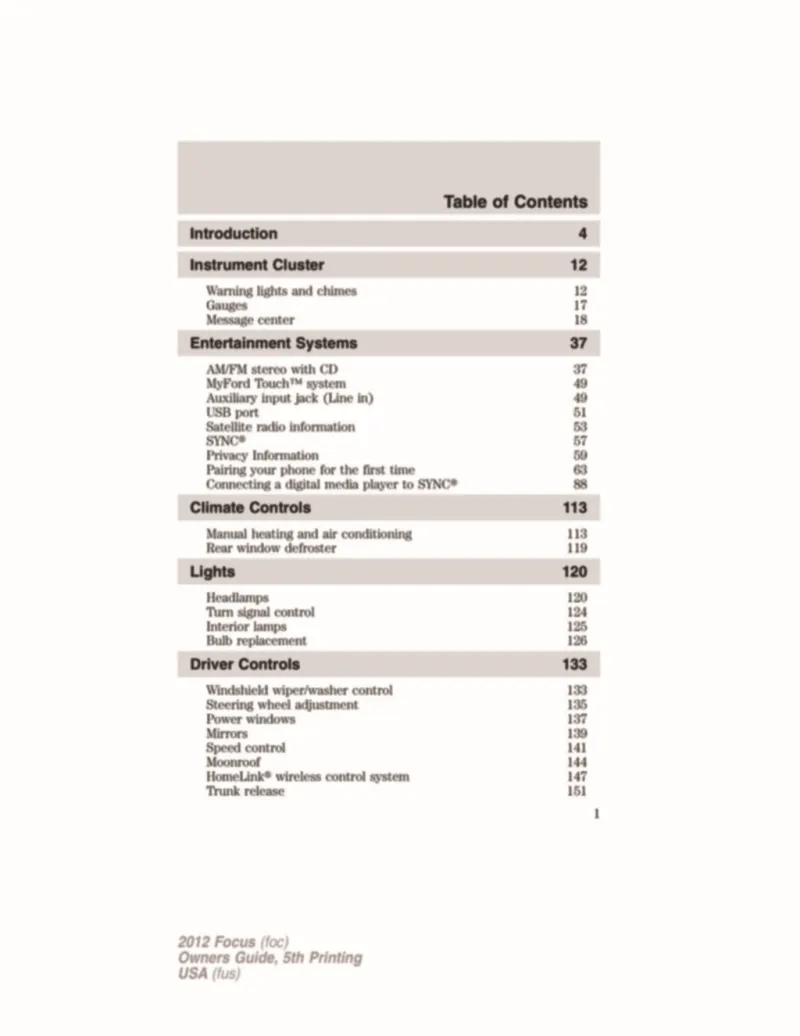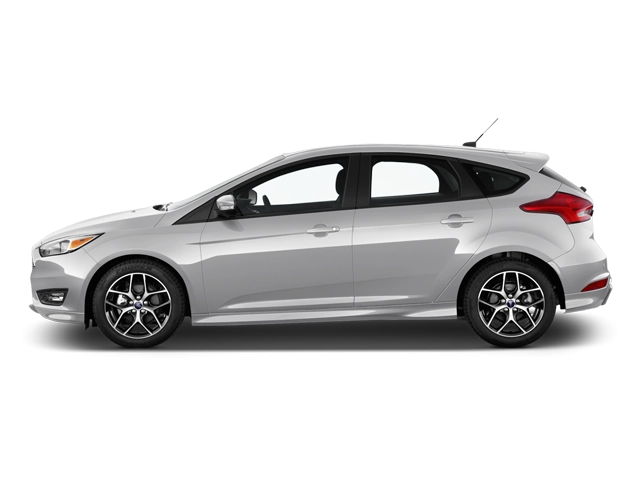2012 Ford Focus Owner's Manual

Table of Contents
2012 Ford Focus Overview
Introduction
The 2012 Ford Focus marks a significant evolution in Ford's compact car lineup, combining style, performance, and advanced technology. This model stands out with its sleek, aerodynamic design and spacious interior, offering convenience and comfort for both city driving and long commutes. As part of a complete redesign, the 2012 Focus builds upon the legacy of its predecessors while integrating Ford's cutting-edge features to attract drivers seeking both efficiency and driving pleasure.
Powertrains
The 2012 Ford Focus offers a robust lineup of powertrains, which includes a highly efficient 2.0-liter four-cylinder engine. This engine delivers a delightful balance of power and fuel efficiency, producing 143 horsepower while achieving up to an impressive 40 mpg on the highway when paired with the manual transmission. For those seeking a little extra zest, an advanced six-speed dual-clutch automatic transmission enhances performance while ensuring a smooth driving experience through its seamless gear shifts.
Trims
Features
Ford equips the 2012 Focus with an impressive array of standard and optional features that enhance both driving enjoyment and safety. Notable available technologies include the SYNC infotainment system, Bluetooth connectivity, a rearview camera, and advanced navigation. Safety features such as multiple airbags, electronic stability control, and traction control provide peace of mind on the road, making it a well-rounded choice for discerning drivers.
Owners Manual
The 2012 Ford Focus owner's manual provides comprehensive guidance on the vehicle's features, maintenance, and care. It serves as an invaluable resource, offering detailed instructions on everything from fluid checks to understanding dashboard functions. For owners, this manual ensures they can maximize their driving experience and keep their Focus running smoothly for years to come.
User manual download
The Ford Focus owner manual for the 2012 model year is to be found in PDF downloadable format on this page. The owner manual for the model year 2012 is free and in English, but the repair manuals are usually not easy to get and may cost more.
Manual Questions
Fill the form below and someone will help you!

